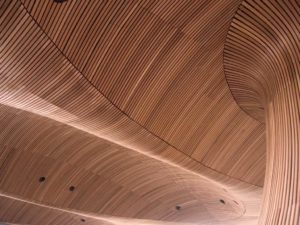When to pursue a construction defect claim is fairly simple and is determined by the statutes of limitation. Simply stated, if you are aware of a possible claim, then the statute of limitations is running, and the claim will be time barred unless you file suit.
Statutes of Limitations Considerations
There are different statute of limitations that apply to a claim, and the statutes of limitation contained in the California Right to Repair Act, California Civil Code §§ 895-945.5, which applies to original construction intended for sale, that is sales of new home construction, have limitation periods that start to run at the close of escrow. However, be aware that the Right to Repair Act does not apply unless the builder-developer elects to invoke the right to repair provisions of the Act by giving notice in the purchase agreement, provides a complete copy of the text of the statute to the buyer at the time of the sale, places a notice of the application of the right to repair act on the title to the property at the time of the sale and notifies the buyer that subsequent buyers are to be notified of the same. In other words, the right to repair act, and specifically, the pre-litigation right to repair procedures of the Act only apply if the builder gives proper notice, and if not, the builder cannot enforce any right to repair, the buyer-owner is released from the pre-litigation obligations of the Right to Repair Act, and most importantly, may proceed with filing an action.

Not only “may” the buyer-owner proceed with filing an action, but because various statutes of limitation are running, the buyer-owner must file an action in a timely manner in order to preserve those claims. And, the buyer-owner must be aware of the statutes of limitati0on that apply.
Although the language of the Right to Repair Act indicates a measure of exclusivity, the Act itself provides for a number of exclusions. Those exclusions are actions for breach of contract or breach of express contractual provision, fraud, bodily injury or violation of a statute. Civil Code § 943. These types of actions have been specifically excluded from the Act by the legislators when drafting the Act, and, in fact, have long been afforded their own separate and distinct common law grounding, even within the law of construction defect, as stated and confirmed by the California Supreme Court in Aas v. Superior Court (2000) 24 Cal.4th 627.
Under the common law, and in most claims, the statutes of limitation to be concerned with are the 4-year statute of limitation for breach of written contract, Civil Code § 337, which would apply to contracts for the sale of a new home, and the 3-year statute of limitations for injury or damage to real property, and fraud, Civil Code § 338. These claims are typically governed by the Discovery Rule, which provides that the statute of limitations starts to run when a reasonable person could have or should have discovered facts that would lead a reasonable person to suspect that they have a claim, or in other words, that a defect exists, that an injury to their property has occurred or is occurring, or, in the case of fraud, that fraud has occurred.
Repairs performed by the builder or developer will not necessarily toll the statute of limitations, but instead may give rise to an equitable claim that estops the builder from asserting the statute of limitations. This requires a rather complicated and fact driven analysis, often dependent on the representations and assurances made by the builder at the time the repairs were made, and the owner’s reliance on those representations.
In view of the foregoing, the best course of action is always to file suit as soon as one becomes aware of any problems in order to protect the claim, and if the defects have arisen and developed themselves over time, still file the action, and be conscious of the first notice and seek to file within 3 years of that date. This will protect claims for breach of contract, injury to real property and fraud claims, the essential core of any action. Filing within the statute of limitations is absolutely essential in order to preserve the claim. This answers the essential question of “when” to file a construction defect claim.
Whether or Not to Pursue a Claim
Whether the defects are serious enough to justify a lawsuit, whether the costs of a lawsuit outweigh the benefits and whether the builder has the financial assets to pay the claim is a completely different set of considerations to take into account, that is whether the claim makes financial sense, what is the total value of the claim, what are the damages, and loss, is there a loss of use or significant diminution in value, was there fraud in the transaction, and what are the prospects for recovery.

These considerations can only be addressed by an experienced construction defect attorney. And, frequently, its more than just looking at the defects and determining the cost of repair, although that issue is critically important. It’s important to look at the total value of the claim, and a variety of ancillary factors, such as alternate housing during repairs, the complexity of the repairs and the time necessary to perform the repairs, loss of use, which is often ignored, and the financial capability and solvency of the builder and the various subs. One must also look beyond the contractors, to see if there is liability and a chance for recovery from any lenders and seller-developers, who are often different and distinct parties from the builder-contractors, with a completely different liability profile, and perhaps most importantly, but completely overlooked, one must examine the prospects for individual liability of persons involved, who frequently hide behind LLCs and corporate entities which many attorneys simply assume cannot be overcome. This is a common fallacy. Many individuals are directly involved in the underlying tort, and as such, under California law, one does not need to resort to alter ego liability or piercing the corporate veil to render participating officers and directors individually and personally liable. Alter ego is not needed if they participate in the underlying tort. This is an essential element of any recovery and financial capability analysis.
Contact us about your construction defects claims or any real estate litigation matter, contact us today for an appointment at (310) 706-4134.


